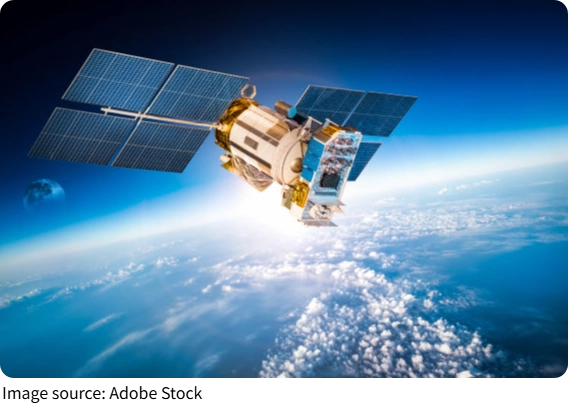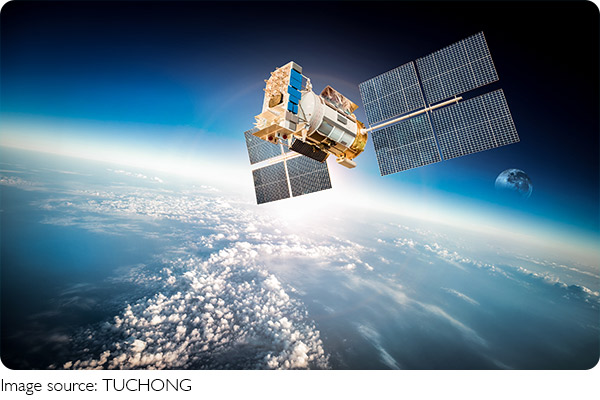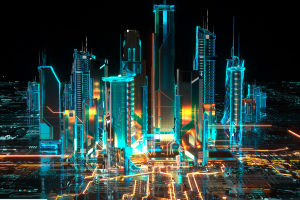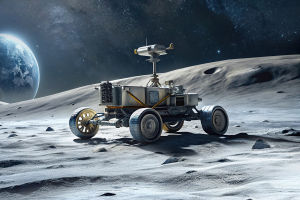Space Junk Crisis

In the past few decades, space exploration has made incredible strides. Satellites, space stations, and probes have allowed us to unlock the mysteries of our universe.
However, with the increase in space activities, a hidden crisis has emerged—space debris, or "space junk." This growing problem threatens not only space exploration but also the safety of astronauts and satellites.
As we continue to venture into space, how do we deal with the mounting issue of space debris?
The Growing Problem of Space Debris
Space junk consists of defunct satellites, discarded rocket parts, fragments from previous collisions, and other debris from past missions. With over 3,000 active satellites and more being launched regularly, the number of space objects orbiting Earth has increased exponentially. It's estimated that there are over 20,000 pieces of space debris larger than a tennis ball, with many more smaller pieces that are nearly impossible to track.
This debris is not just floating harmlessly in space. At high speeds—up to 28,000 kilometers per hour—it poses a massive risk to active satellites and space stations. Even a tiny fragment can cause serious damage to operational satellites or spacecraft. In fact, astronauts aboard the International Space Station (ISS) are regularly forced to perform "debris avoidance maneuvers" to avoid collisions with space junk. The threat is very real, and the stakes couldn't be higher.
The Risks of Space Debris
The risks posed by space debris are numerous. First and foremost, there is the direct threat to human life. A collision between a piece of space debris and a spacecraft could be catastrophic. In 2009, for example, a satellite collision created thousands of new pieces of debris, worsening the situation.
Another concern is the impact on future space missions. As the debris field grows, it becomes increasingly difficult to navigate safely through Earth's orbit. A growing number of satellites rely on precise orbits to maintain communication, weather forecasting, and scientific research. If we don't act soon, the increase in space debris could make certain orbits unusable.
Moreover, space junk poses a financial threat. The cost of repairing or replacing damaged satellites is astronomical, and in some cases, space missions may be delayed or canceled because of the risks posed by debris. The global economy depends on satellite technology for communication, navigation, and meteorology. As space debris continues to accumulate, the financial burden could grow significantly.
Current Solutions and Their Limitations
Currently, there are several initiatives to address the space debris problem. One approach is to track and monitor space junk. Organizations like the U.S. Space Surveillance Network track the movement of debris, and private companies like Astroscale are developing technologies to remove or deorbit inactive satellites and debris. These efforts are promising, but they are still in the early stages.
In addition to tracking and removal, there are efforts to design satellites and spacecraft with debris mitigation in mind. For example, new satellites are being designed with built-in mechanisms to ensure that they burn up upon re-entry into Earth's atmosphere, reducing the creation of debris after their mission is completed.
However, while these efforts are important, they are not sufficient. The sheer volume of debris in orbit, combined with the increasing number of satellite launches, means that space junk is only going to become a bigger issue unless we take more aggressive actions.
Innovative Solutions on the Horizon
Fortunately, there are several innovative solutions that are being developed to combat space junk. One of the most promising ideas is the use of "space tugs"—small spacecraft that can capture and deorbit larger pieces of debris. Companies like ClearSpace-1 are working on technology to physically remove large, non-functional satellites by "catching" them and bringing them back to Earth for safe disposal.
Another exciting development is the use of lasers to clear debris. Researchers are exploring the possibility of using ground-based or space-based lasers to gently push small pieces of debris out of orbit, allowing them to burn up in Earth's atmosphere. This method could potentially be a game-changer for managing the smaller, untrackable debris that makes up a significant portion of space junk.
Additionally, international collaboration will be crucial. Spacefaring nations need to agree on guidelines and regulations for debris management. The development of space traffic management systems, where satellites and debris can be tracked in real-time, is an essential step toward preventing future collisions.
What We Can Do: Raising Awareness and Collaboration
As individuals, we can contribute by supporting policies and regulations aimed at reducing space debris. Governments and international bodies must take responsibility and push for stronger regulations in space exploration, ensuring that space junk management becomes a priority in future missions.
Moreover, the public must be educated on the significance of space debris. Many of us are unaware of the threats posed by this invisible crisis. Awareness is key to building momentum for change. As space exploration continues to expand, we must focus on making it sustainable. We are not only launching rockets; we are leaving a lasting footprint in the cosmos.

Conclusion: A Sustainable Future in Space
The issue of space debris is no longer just a theoretical concern—it's an urgent problem that requires immediate action. As we continue to expand our presence in space, we must ensure that our activities do not jeopardize future generations' ability to explore and use space. Through technological innovations, international cooperation, and proactive debris management strategies, we can address this growing threat and ensure that space remains a safe and viable domain for exploration.
Space exploration holds immense promise for humanity, but with great power comes great responsibility. The next frontier is not just about discovering new worlds—it's about preserving the space environment for all future missions. It's time to clean up our act before space junk becomes an even bigger problem.
What do you think about the issue of space debris? How can we, as a global community, take action to address it? Share your thoughts with us below!
-
 VR and AR RevolutionHow Virtual and Augmented Reality are Transforming Entertainment, Education, and Healthcare
VR and AR RevolutionHow Virtual and Augmented Reality are Transforming Entertainment, Education, and Healthcare -
 Smart Cities and IoTHow IoT and Smart Cities Are Revolutionizing Urban Life, from Traffic to Energy Use
Smart Cities and IoTHow IoT and Smart Cities Are Revolutionizing Urban Life, from Traffic to Energy Use -
 Rover Mission BreakthroughsLunar Rovers Are Discovering Things That Will Shock You – Here’s the Proof!
Rover Mission BreakthroughsLunar Rovers Are Discovering Things That Will Shock You – Here’s the Proof!